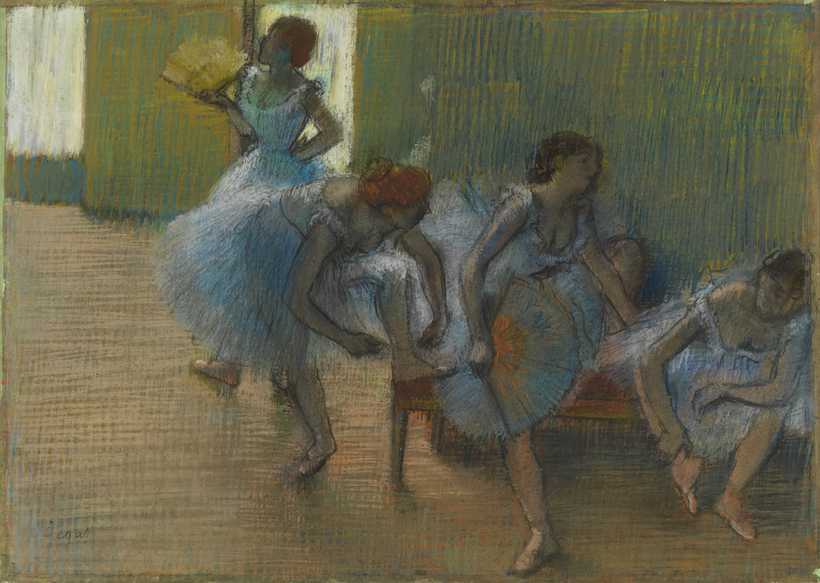If you close your eyes and think of Paris during the Belle Époque, the City of Light does not appear in the amber tones of faded photographs, although cameras were much in use by that time. It is scenes of everyday life, rendered in the bright colors and liberated brushstrokes of Impressionist and Post-Impressionist artists, that form our collective memory. This visual monopoly, in fact, is a significant triumph of the Impressionist movement.
It is harder than you think to define the moment when artists began to leave history painting behind. Christopher Lloyd, the former keeper of the Queen’s pictures and one of the curators of “Impressionists on Paper: Degas to Toulouse-Lautrec”—opening today at the Royal Academy of Arts, in London—takes up the question in his essay in the exhibition catalogue. He refers to a seminal essay by Charles Baudelaire, written in 1863, “The Painter of Modern Life.” Here Baudelaire described his ideal artist, Monsieur G (Constantin Guys), in a paragraph that reads like an impassioned call to arms.

“Observer, philosopher, flâneur—call him what you will; but whatever words you use in trying to define this kind of artist, you will certainly be led to bestow upon him some adjective which you could not apply to the painter of eternal, or at least more lasting things, of heroic or religious subjects. Sometimes he is a poet; more often he comes closer to the novelist or the moralist.” And so it began.
The first Impressionist exhibition was held in 1874. The avant-garde art on show—championed by writers including Joris-Karl Huysmans, Charles Ephrussi, and Baudelaire—caused a scandal because it embraced the here and now. The show generated heated debate in the salons and hectares of copy.

And it wasn’t only the subjects that had changed. While many believe that the manufacture of oil paint in tubes enabled artists to work outside and contributed to this artistic revolution, the immediacy of the work, the need to capture real life, meant that working on paper was often more practical than canvas and much more common. Sketches could be made while artists were out and about, and works on paper ascended in status: where once they were considered preliminary studies, now they were accepted as complete artworks.
Art suppliers responded by creating new colors and materials for those who worked on paper. Innovations came thick and fast in pastels and papers that worked well with essence (oil paint thinned with turpentine), which allowed light in. Fixatives let artists layer pastels, a technique that Edgar Degas mastered. Soft smudging invested the tutus in his ballet scenes with the shimmering magic that delights to this day.

This new approach to art gave license to human curiosity. “Impressionists on Paper: Degas to Toulouse-Lautrec” takes us on a dizzying tour of the Belle Époque, revealing fascinating fragments of everyday lives. We dance in the Moulin Rouge, gaze furtively at a heavily veiled woman in the street, then catch the glance of a beautiful stranger in a cab whose eyes we will never see again. We can spy on a lady in her bath, thanks to Degas and his shocking After the Bath, Woman Drying Herself (1890–95). We become flâneurs, experiencing life as an artist and visiting places where no respectable member of the bourgeoisie would have gone.
“Impressionists on Paper: Degas to Toulouse-Lautrec” is on at the Royal Academy of Arts, in London, through March 10, 2024
Check out AIR MAIL’s Arts Intel Report, our newly revamped research tool for what to do and where and when to do it
Sarah Hyde is a London-based writer

